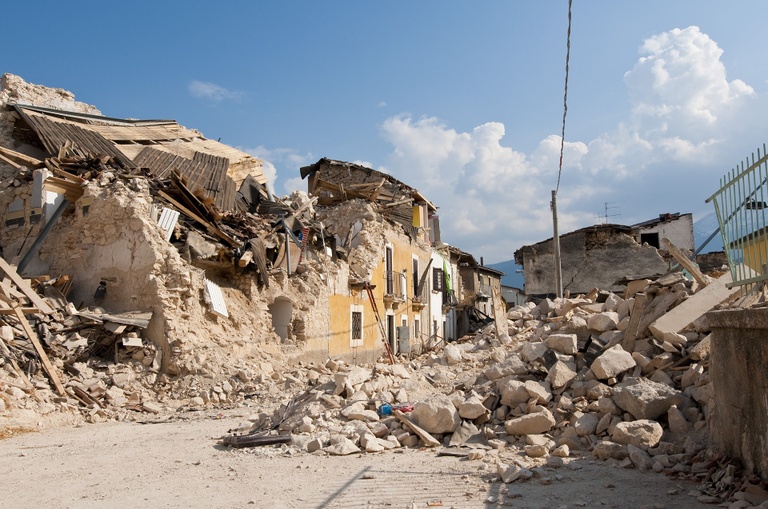Topic of the month April 2019: Catastrophe bonds in the tension between ESG integration and SDG contribution payments
Catastrophe bonds in the tension between ESG integration and SDG contribution payments
by Markus Haefliger, Plenum Investments AG
The core business of the insurance industry takes place on the liabilities side of the balance sheet
The business model of an insurance company is to reserve capital to cover possible insurance losses, which is paid out to the policyholder in the case of an event. The most important liability items of the insurers are the so-called mathematical reserves, which belong to the technical provisions. Accordingly, the core business takes place on the liabilities side of the insurance balance sheet.
Knowing these facts, it is surprising that the core business of insurers has long been neglected or ignored in the ESG analysis. This situation was in stark contrast to the major progress made in ESG integration on the assets side of an insurance balance sheet. The question of credibility is central.
Special status of catastrophe bonds
The market for catastrophe bonds does not build actuarial reserves but instead collects capital in order to make it available to insurers to cover their insurance claims. With the help of catastrophe bonds, the capital market provides reinsurance cover outside the traditional reinsurance industry. The risk transfer takes place by means of a special purpose vehicle (SPV), so that the investor does not bear the insurer's credit risk and the insurer can only use the invested capital subject to conditions specified in the reinsurance contract. The issuer of a catastrophe bond is therefore not the insurer but the SPV itself, which reinsures the book of the issuer (insurer).
The creation of transparency is currently the main focus of attention
The big challenge is to create the necessary transparency on the underwriting side. In principle, this can be done in two ways: On one hand, transparency can be achieved through the nature of the insurance business (line of business) by clarifying whether it is an ESG-compliant business per se or not. On the other hand, the ESG analysis can be delegated to the insurer if the latter confirms that it applies recognised ESG criteria to the insurance book or explicitly excludes certain business. Experience shows, however, that the latter approach does not yet guarantee complete transparency. The remaining lack of transparency can be further reduced with appropriate and generally accepted procedures. A particular challenge is posed by CAT bonds whose payout is linked to factors independent of the cedant's insurance book, as is the
case with industry loss triggers. This trigger mechanism is based on the total loss of the insurance industry as opposed to the actual loss incurred by the cedant. This is usually determined by independent companies (e.g. PCS for the USA or PERILS for Europe).
To what extent do catastrophe bonds meet the requirements of the UN Action Plan?
"We see a world ahead of us that is free of poverty, hunger, disease and need and in which all life can flourish." This is the vision of the Agenda 2030 for sustainable development of 25 September 2015. The strategy for implementing the vision is based on the formulation of the of the 17 main goals and 169 subgoal stated on the Social Development Goals (SDGs).
Securing achievements on the way to achieving the goals was not defined as an independent goal. This raises the question of whether the (re)insurance market was consciously or unconsciously deprived of the basis to act in the SDG sense. This is hard to imagine, because the need for protection increases once "SDG prosperity" has been achieved, and is at risk to be destroyed again. The motivation to take immediate action increases if it is ensured that its outcome can continue in the long term. If this is not the case, the usefulness of measures is questioned. The principle of sustainability is based precisely on this long-term aspect, i.e. on the ability to preserve what has been achieved for the future. The example of climate change impressively demonstrates that direct measures are necessary to reduce climate-damaging behaviour and to safeguard those regions or civil societies that are particularly affected by such risks.
Prevention is a building block in achieving SDG goals. This refers to the implementation of suitable measures to prevent the occurrence of an event or to contain the negative effects, for example in the event of a natural disaster. However, there is also prevention, which refers to intervention after the occurrence of an event in order to counteract further deterioration of the respective situation. These forms of preventive measures are precisely not covered by the SDG wording, means that the reinsurance industry does not actively contribute to the achievment of the SDGs.
World Bank, WHO and governments use catastrophe bonds successfully
Catastrophe bonds are becoming the all-purpose weapon against the consequences of pandemics, earthquakes and major storms in the circles of the World Bank, WHO and governments. The risk transfer concept, which has already proven its worth in industrialized regions is attracting increasing interest in underdeveloped regions. It has been recognized that by natural catastrophe losses always poses major challenges to governments. Either the capital is made available too late, dried up through corruption or is completely lacking when it comes to financing reconstruction efforts. It is not uncommon for traces of natural disasters to be discernible today, even if they have already occurred years ago. In
isolated cases, societies affected by natural disasters are still struggling with these consequences, which endanger the stability of a region or further development in the long term. The great dissatisfaction among the population associated with this is a threat to political systems of all kinds, which is increasingly recognised by governments and is leading to a rethink when it comes to providing rapid and efficient assistance in the event of natural disasters.
Increased and targeted protection against natural catastrophe losses in less developed regions is increasingly becoming an essential component of supranational commitment. Using pandemic risks as an example, CAT bonds impressively demonstrate how strong the direct link between alternative insurance transfer and social responsibility is in order to protect the world's population from major economic damage and social suffering. The following examples provide an insight into the nature of cooperation, motivation and impact of catastrophe bonds.
The World Bank first introduced pandemic insurance in 2017 in the form of a USD 500 million CAT bond to ensure the financing of emergency measures to prevent the spread of pandemics (Pandemic Emergency Financing Facility - PEF). For a long time now, the spread of infections has not been restricted to the place where they originate, which is usually far from the world's economic centres. Time is a decisive factor in combating and containing disease outbreaks, as the spreading diseases is massively increased because of global air travel. Scientists believe that a similar outbreak to the Spanish flu of 1918 would cause more than 33 million deaths today, and that in only nine months. The costs are estimated at just under 5 percent of the world's GDP. According to the head of the World Bank, this would amount to more than 3.6
trillion US dollars. It doesn't have to be a pandemic of this magnitude. Let's look back to 2014, when Ebola broke out in West Africa and revealed major weaknesses in crisis management. The economic damage caused by the Ebola outbreak is now estimated at USD 10 billion.
Another example is the Mexico MultiCat Bond and subsequently the "Fonden 2017 CAT Bond". They were issued by International Bank for Reconstruction and Development (IBRD), with an issueance volume of USD 290 million to insure natural catastrophe risks in Mexico. The premiums were financed by the State of Mexico. This CAT bond was issued in August 2017. An earthquake event occurred one month later and the capital was paid out within a short time.
Until today, the World Bank had acted as the initiator to protect underdeveloped regions. It is only a matter of time before the capital market becomes aware of its social responsibility when it comes to bearing natural catastrophe risks worldwide.
Bottom line
If one looks at the exact wording of the UN action plan for sustainable development, it becomes apparent that insurance per se is not an SDG objective. The SDGs formulate goals to prevent climate change and reduce natural catastrophes. However, no preventive measures are defined when the aim is to protect society from a possible relapse into poverty or to promote the reconstruction of infrastructure following a natural disaster.
It becomes clear that the capital market is expected to play an essential and responsible role if it is assumed that the traditional reinsurance industry may become less able to deal with an increased frequency of catastrophic events as a result of the ongoing climate change.
There is no doubt that the CAT bond market, as a carrier of natural catastrophe risks, helps to mitigate the negative and destructive effects of natural catastrophes. This raises the question of whether the wording of Agenda 2030 should be interpreted narrowly or whether there is sufficient scope for interpretation for the (re)insurance industry to make its contribution in the SDG sense.
Clarification of this situation is essential if the credibility of the CAT bond market is not to be jeopardised when implementing the SDG objectives
|
About Plenum Plenum Investments AG is an investment manager specialized in insurance risks. Her core competence lies in the management of natural catastrophe and longevity risks. The investment focus is on transparent investment solutions in the area of insurance-linked securities. Plenum Investments AG manages mutual funds (UCITS) that are licensed for public distribution in various countries and alternative investment funds (AIF) for professional and qualifi ed investors. In addition, Plenum Investments AG off ers its clients portfolio management and advisory services on a mandate basis. The natural catastrophe business by means of securitised catastrophe bonds (CAT bonds) represents the main business area of the company. |




